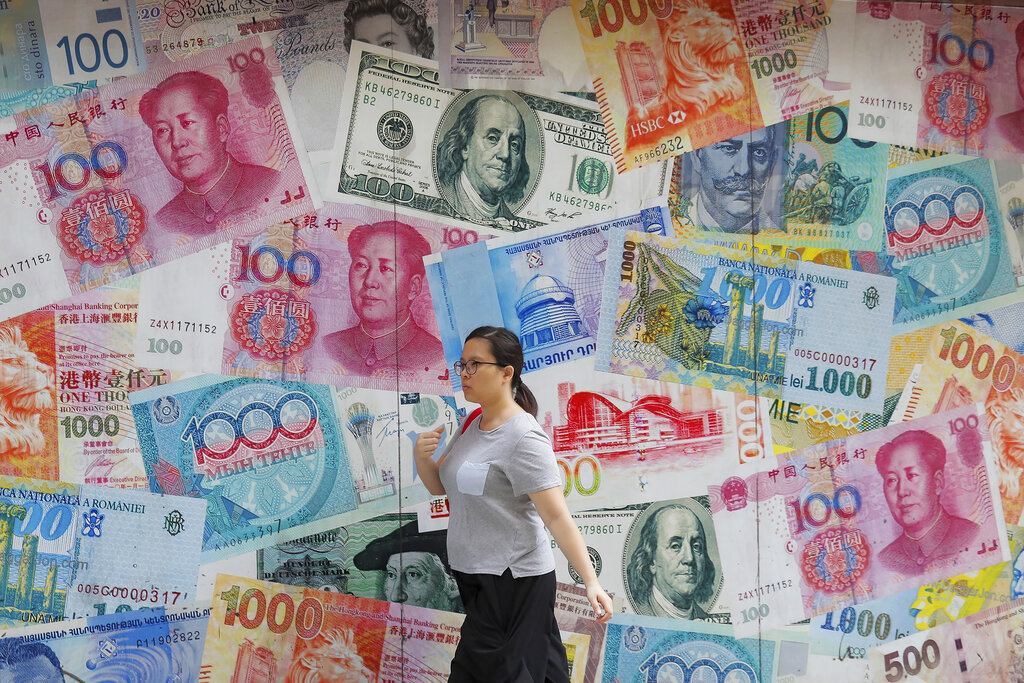Currency Operations for Sanctions Evasion: How the Yuan and Dirham Save the Kremlin and Why This Weakness Can Be Blocked

Russia sustains its economy and war through alternative currency channels, but the West can block them with secondary sanctions and financial oversight.
Western sanctions policy against Russia since 2022 has become the most extensive in modern history: tens of thousands of restrictions, frozen Central Bank assets, and a ban on access to the dollar and euro. Yet, contrary to expectations, the Russian economy has not collapsed. The key to this paradox is a new currency architecture for trade, with the Chinese yuan and UAE dirham as the main instruments. Thanks to them, the Kremlin continues to receive foreign currency inflows, sustain its budget, and finance the war.
The Yuan Has Become Russia’s Main External Currency
In 2021, the yuan’s share in Russia’s currency operations was less than 1%. By mid-2025, it exceeded 40% in foreign trade and over 50% in interbank transactions. This unprecedented transformation has made Russia the world’s most financially dependent partner on China.
Thanks to the yuan, Moscow finances critical imports – from electronics and microchips to machinery and equipment for the military-industrial complex. Transactions that are impossible in dollars or euros due to the risk of blocking are conducted through Chinese banks. Meanwhile, even Western companies that officially exited the Russian market often supply components through Chinese intermediaries, settling in yuan.
The yuan also serves as a reserve currency: Russia’s Central Bank has accumulated it in its international reserves, as the majority of “hard” assets in dollars and euros are frozen. Thus, Beijing has become not only a trade partner but also a financial donor to Russian stability.
The Dirham Has Become a “Transit Dollar”
Dubai has emerged as another survival hub for Russia. The UAE’s currency, the dirham, is pegged to the U.S. dollar, making it convenient for bypassing restrictions. Through Dubai’s banks, Russian companies pay for transactions involving oil, gold, and even high-tech equipment.
In effect, the dirham provides Russia with indirect access to dollar liquidity: payments are made through a “ruble-dirham-dollar” conversion, formally avoiding sanctions restrictions. According to expert estimates, in 2024–2025, up to 20% of Russia’s oil exports were processed through such schemes.
Dubai has also become a key logistics channel: shell companies registered there supply Russia with dual-use goods, masking transactions with “civilian” contracts. For the Kremlin, this creates a parallel financial-trade corridor that is difficult to block without political pressure on the UAE.
Russia’s Budget Relies on Currency Schemes
Russia’s budget depends on oil and gas revenues for approximately 40%. Despite sanctions, in 2024, the Kremlin earned hundreds of billions from energy exports, and in the first half of 2025 alone, about $60 billion. This was made possible by currency operations in yuan and dirham.
Without these schemes, Russia would not have been able to finance a military budget of $140 billion – a record figure, three times higher than pre-war levels. These funds supported the production of hundreds of thousands of shells, tens of thousands of drones, and the purchase of components for its missile program.
The key logic is simple: the longer these currency “bypass routes” remain open, the longer the Kremlin has the resources to wage war.
Why Sanctions Are Stalling: Weak Points
The current sanctions system has several fundamental vulnerabilities. First, it did not account for Russia’s readiness to swiftly restructure its currency policy, abandoning the dollar and euro. Second, the West lacks sufficient leverage over the financial systems of China and the UAE, which have not joined the sanctions. Third, the absence of secondary sanctions allows numerous intermediaries to operate on the edge of legality.
China’s example is telling: mid-tier banks openly conduct transactions with Russia in yuan, while formally complying with international rules. A similar situation exists in Dubai, where local banks service Russian company transactions, leveraging the dirham’s fixed peg to the dollar.
How These Channels Can Be Blocked
Stopping these currency schemes is feasible, but it requires tougher measures. First, the U.S. and EU must impose secondary sanctions on banks in China and the UAE that systematically service Russian operations. This approach was already applied to Iranian entities and proved effective.
Second, a global coalition should be formed to control the use of the yuan and dirham in transactions with Russia. This includes negotiations with India, Turkey, and Singapore, which could serve as alternative intermediaries for Moscow.
Third, transparent systems for monitoring currency flows must be implemented. The use of financial intelligence technologies would enable the rapid identification and blocking of suspicious transactions at early stages.
The yuan and dirham have become a lifeline for the Kremlin, enabling it to finance the war despite tens of thousands of restrictions. But this lifeline is not unbreakable. The West has the tools to block these currency channels – from secondary sanctions to diplomatic pressure on key intermediaries.
The sooner this happens, the sooner Russia will feel the true cost of sanctions, and the fewer resources it will have to continue the war. For Ukraine and Europe, this is not just a matter of financial discipline but also of security, as these currency schemes continue to fuel Russia’s war machine.
Volodymyr Kuznetsov, communications specialist, expert at the United Ukraine Think Tank